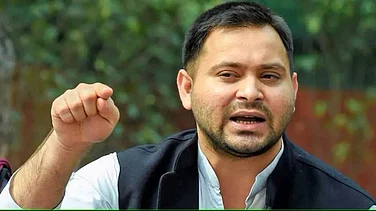“It was a planned idea to increase the population, establish dominance, supremacy, and make this country Pakistan,” said Mohan Bhagwat, the sarsanghchalak or the head of the Rashtriya Swayamsevak Sangh (RSS), the ideological-organisational parent of India’s ruling Bharatiya Janata Party (BJP). “It was about Punjab and Sindh then, (while) Assam and Bengal are critical now.”
Bhagwat was addressing a gathering at Guwahati, the capital of Assam, in July 2021, two months after the BJP, riding a wave of sentiments against “Bangladeshi-Muslim infiltrators”, had returned to power in the state to rule for a second consecutive term.
Assam’s population growth rate has been higher than the national average between 1951 and 2011, recording a 3.88-fold increase (80.28 lakh to 3.12 crore), whereas India’s population increase was 3.35 times during the same period. Between 1951 and 2011, Assam’s population density recorded a 3.9-times increase, whereas the national average was 3.26-times.
As a result, whereas Assam’s population density was lower than the national average in 1951, it surpassed the national average by 1971, one of the reasons that led to the launch of the militant and violent anti-outsider campaign in 1979.
The rapid growth of population and change in demography impacting electoral equations have been at the core of Assam politics for over four decades now, starting with the launch of the anti-outsider agitation in 1979. In a 2012 paper, titled “The Killing Fields of Assam: The Myth and Reality of Its Muslim Immigration”, economist Vani Kant Borooah wrote that Assam had “spawned some of the most egregious incidents of anti-immigrant violence in South Asia directed mainly, though not exclusively, against Bengali Muslims”.
Population growth and demographic change have also been one of the core issues of the RSS, which got involved in the Assam agitation soon after it broke out. In fact, in 1980, Prime Minister Indira Gandhi told Parliament that though Assam’s student leaders were ready for a settlement, the RSS was fuelling trouble. The RSS has, since that time, consistently linked population growth —read demographic change— especially in Assam and West Bengal, with the country’s internal security.
However, by 2021, the governments at the Centre and in Assam had also started doing so. In October, the Union home ministry under Amit Shah increased the territory of the Border Security Force (BSF) from 15 km to 50 km in Assam and West Bengal. During the annual Director General of Police conference held between November 19 and 21, 2021, a paper presented by the Assam Police claimed that demographic changes in Assam’s districts bordering Bangladesh were a matter of security concern.
A few days later, BSF Director General Pankaj Kumar Singh told the media that he believed demographic change was the reason behind the home ministry’s decision to increase the BSF’s territories. He pointed out that “the demographic balance has been upset to a great degree” in states like Assam and West Bengal, resulting in agitations in certain states and even a change in the composition of the electorate, and the increase in the jurisdiction would enable the BSF to “help, support and supplement the state police in catching hold of the infiltrators”.
The Union home ministry has increased the territory of the Border Security Force (BSF) from 15 km to 50 km in Assam and West Bengal due to “demographic changes”.
In August 2022, the National Security Strategies Conference made the proposition even more direct. A session was titled “Demographic changes and growing radicalisation in border areas”. At the conference, Shah asked the DGPs of border states to keep a watchful eye on the demographic changes in the border districts.
Assam and Bengal are not the only states to record population growth. North Indian states like Uttar Pradesh and Bihar, which share no border with Bangladesh, recorded a 3.31-fold and 3.57-fold increase in population, respectively. Madhya Pradesh, which shares no border with any country, recorded a 3.9-fold increase.
In fact, between 1971 and 2011, Assam and West Bengal’s growth rates —2.13-times and 2.06-times— have been lower than the national average of 2.2-times. Besides, in a research paper titled “Immigration and Demographic Transformation of Assam, 1891-1981”, Susanta Krishna Dass pointed out that Assam’s population increase since 1891 has always been higher than that of the country as a whole and the same trend is observed while comparing Assam’s growth with other states —provinces— during 1901-1951. He pointed out that even in 1911-1921, when India recorded a negative population growth rate, Assam recorded a positive growth rate of 20.48 per cent.
Yet, the growth of population in Assam has been used as a political issue for several decades. First, it was against “outsiders” meaning Indians from other states, then against “foreigners” meaning Bengali Hindus and Muslims from Bangladesh (earlier East Pakistan) and finally, with the intervention of the BJP and the RSS, only Muslims of alleged Bangladesh-origin. In effect, any Bengali-speaking Muslim can feel the heat.
One of the main reasons Assam’s population explosion triggered more tension than other places is a significant rise in the share of the Muslim population — from 24.68 per cent in 1951 to 34.22 per cent in 2011.
Notably, the BJP’s rise has largely been at the cost of the Asom Gana Parishad (AGP), the party that was formed out of the Assam agitation and ruled the state for two terms, but suffered setbacks since the turn of the new century. Several political observers have described this as a classic case of Hindutva appropriating an ethnic movement.
According to Akhil Ranjan Dutta, head of the political science department at Gauhati University, demography and population played a “very significant role” in Assam politics, especially in terms of creating polarisation, but it would not be correct to attribute the BJP’s rise solely to demography.
He says that the RSS and the BJP worked in a “matured way”, with a long-term perspective of bringing different ethnic groups like the Bodos and the tea garden communities under one fold, and ensuring their adequate representation and unifying them against the supposedly common enemy of Bangladeshi Muslims.
“Muslims of alleged Bangladesh-origin have been painted not only as an enemy of the party, but also as an ene¬my of the Assamese nationality, culture, and civilisation. They have managed to reduce local sentiments against Hindus of Bangladesh origin to a certain extent,” says Dutta, adding that the BJP’s biggest success was in combining polarisation politics with competitive economic populism.
The saffron camp has tried to build its base in West Bengal on similar grounds — warning Hindus of the state against the impending danger of an increasing Muslim population. West Bengal’s population grew 3.47-times and population density 3.44-times between 1951 and 2011 — higher than the national average on both counts, though not by any great margin.
However, the main point of focus of the Hindu nationalists is the rise in Muslim population share — from 19.85 per cent in 1951 to 27 per cent in 2011. It is a trend that the BJP and the RSS have attributed to the “infiltration of Muslims” from Bangladesh. The impact of such demographic changes on the delimitation of assembly constituencies has been one of the main points of the Sangh Parivar’s concern.
In 2009, Bengal BJP veteran Mohit Ray wrote a long article in which he discussed how the latest delimitation saw Muslim-majority districts gaining assembly seats at the cost of Hindu-majority districts. Since the publication of the 2011 Census, the saffron camp has been running an intense campaign highlighting how West Bengal was turning into “West Bangladesh”.
Some of the BJP’s initial successes were seen in the 2019 Lok Sabha elections, when the party won the only Lok Sabha seat of the Muslim-majority Uttar Dinajpur district and one of the two seats in another Muslim-majority district, Malda. Now, Murshidabad, where Muslims make up two-thirds of the population, is their focus. It has three Lok Sabha seats. Amit Shah is scheduled to address a public rally there in May to kick-start preparations for the 2024 Lok Sabha election.______________________________________________________________________________________________
Snigdhendu Bhattacharya in Kolkata and Guwahati
This appeared in print as “Politicising Demography”


























